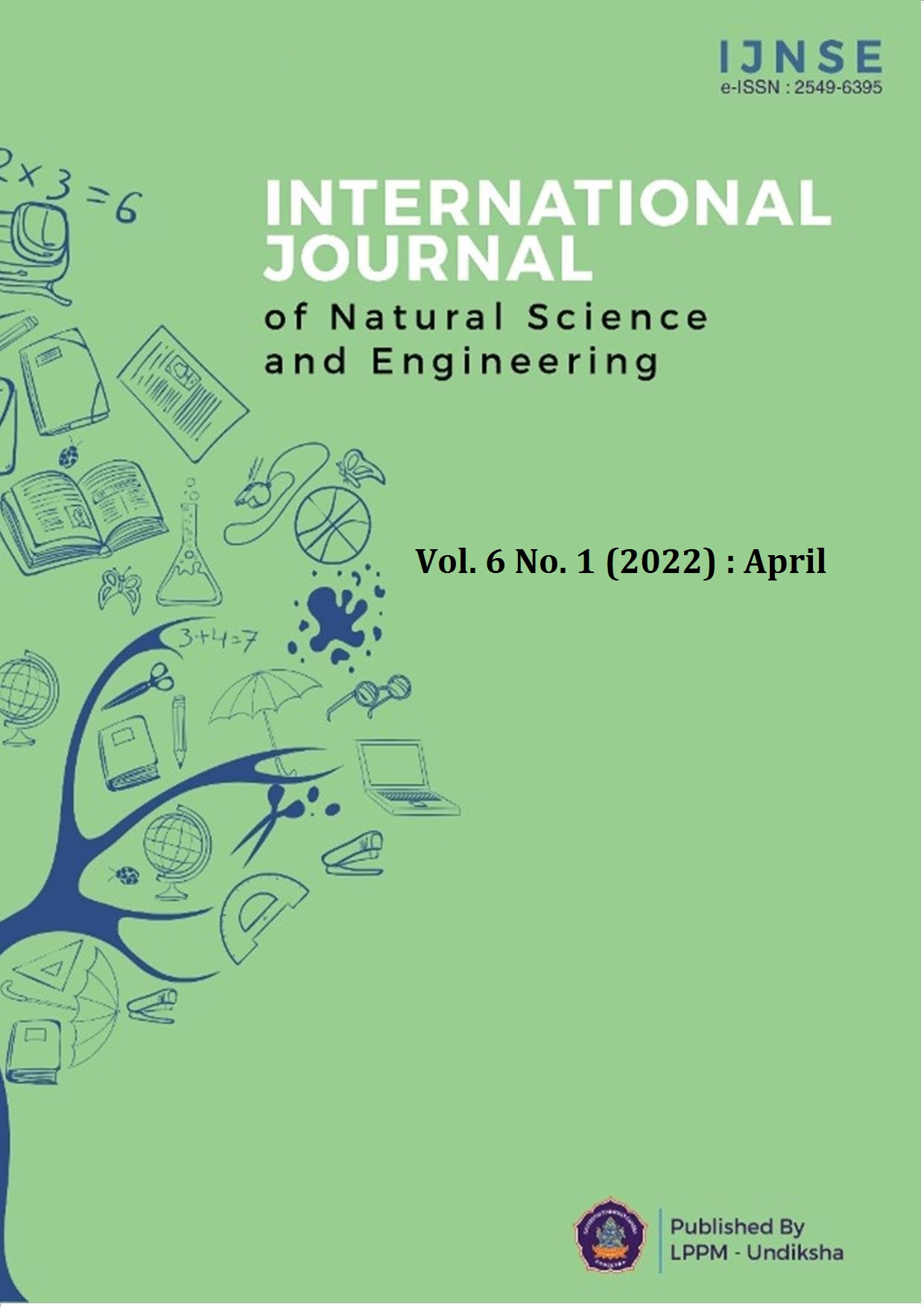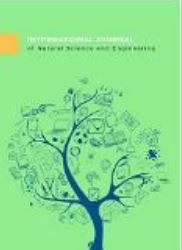Mobile Learning Media for Computer and Based Network at Vocational High School
DOI:
https://doi.org/10.23887/ijnse.v6i1.48036Keywords:
Android, Mobile Learning, Need AnalysisAbstract
Currently, there are still many students who like digital-based learning activities. This study aims to analyze the need for developing Android-based mobile learning media in SMK. The type of research used is survey research and literature study. The methods used in collecting data are observation, interviews, and questionnaires. The instruments used are interview sheets and questionnaires. The data analysis technique used is descriptive statistics. The study results showed that around eighty-two percent of students actively use smartphones outside learning hours. Students who use smartphones in learning are more informal, using them more to find information. On the other hand, only twenty-five students use smartphones to access course materials. Students agree to use their smartphones to study in class because it can increase their interest in learning and their ability to understand the subject matter better. Learning media can be a source of learning for students and help teachers in teaching, and learning activities can be more effective.
References
Ahdan, S., Putri, A. R., & Sucipto, A. (2020). Aplikasi M-Learning Sebagai Media Pembelajaran Conversation Pada Homey English. Sistemasi, 9(3), 493. https://doi.org/10.32520/stmsi.v9i3.884. DOI: https://doi.org/10.32520/stmsi.v9i3.884
Alfawareh, H. M., & Jusoh, S. (2014). Smartphones usage among university students: Najran University Case. International Journal of Academic Research, 6(2). https://doi.org/10.7813/2075-4124.2014/6-2/B.48. DOI: https://doi.org/10.7813/2075-4124.2014/6-2/B.48
Astuti, I. A. D., Sumarni, R. A., & Saraswati, D. L. (2017). Pengembangan Media Pembelajaran Mobile Learning Berbasis Android. JPPPF- Jurnal Penelitian dan Pengembangan Pendidikan Fisika, 3(1), 57–62. https://doi.org/10.21009/jrpk.072.10. DOI: https://doi.org/10.21009/1.03108
Bano, M., Zowghi, D., Kearney, M., Schuck, S., & Aubusson, P. (2018). Mobile learning for science and mathematics school education: A systematic review of empirical evidence. Computers and Education. https://doi.org/10.1016/j.compedu.2018.02.006. DOI: https://doi.org/10.1016/j.compedu.2018.02.006
Bartel, A., & Hagel, G. (2014). Engaging students with a mobile game-based learning system in university education. International Journal of Interactive Mobile Technologies, 8(4), 957– 960. https://doi.org/10.3991/ijim.v8i4.3991. DOI: https://doi.org/10.3991/ijim.v8i4.3991
Chen, Y.-L., & Hsu, C.-C. (2020). Self-regulated mobile game-based English learning in a virtual reality environment. Computers & Education, 154. https://doi.org/10.1016/j.compedu.2020.103910. DOI: https://doi.org/10.1016/j.compedu.2020.103910
Churchill, D., Fox, B., & King, M. (2016). Framework for Designing Mobile Learning Environments. In Lecture Notes in Educational Technology. Springer International Publishing, 9789811000256, 3–25. https://doi.org/10.1007/978-981-10-0027-0_1. DOI: https://doi.org/10.1007/978-981-10-0027-0_1
Cohn, J. (2016). “Devilish Smartphones” and the “Stone-Cold” Internet: Implications of the Technology Addiction Trope in College Student Digital Literacy Narratives. Computers and Composition, 42. https://doi.org/10.1016/j.compcom.2016.08.008. DOI: https://doi.org/10.1016/j.compcom.2016.08.008
Devraj, R., Colyott, L., & Cain, J. (2021). Design and evaluation of a mobile serious game application to supplement instruction. Currents in Pharmacy Teaching and Learning, 13(9). https://doi.org/10.1016/j.cptl.2021.06.032. DOI: https://doi.org/10.1016/j.cptl.2021.06.032
Díaz-Sainz, G., Pérez, G., Gómez-Coma, L., Ortiz-Martínez, V. M., Domínguez-Ramos, A., Ibañez, R., & Rivero, M. J. (2021). Mobile learning in chemical engineering: An outlook based on case studies. Education for Chemical Engineers, 35. https://doi.org/10.1016/j.ece.2021.01.013. DOI: https://doi.org/10.1016/j.ece.2021.01.013
Efriyanti, L., & Annas, F. (2020). Aplikasi Mobile Learning Sebagai Sarana Pembelajaran Abad 21 Pada Era Revolusi Industri 4.0. Jurnal Educative: Journal of Educational Studies, 5(1), 1–40. https://doi.org/10.30983/educative.v5i1.3132. DOI: https://doi.org/10.30983/educative.v5i1.3132
El-Sofany, & Hosam, F. (2014). Development of Mobile Educational Services Application to Improve Educational Outcomes using Android Technology. International Journal of Interactive Mobile Technologies, 8(2). https://doi.org/10.3991/ijim.v8i2.3509. DOI: https://doi.org/10.3991/ijim.v8i2.3509
Hanifah, H., Supriadi, N., & Widyastuti, R. (2019). Pengaruh Model Pembelajaran E-learning Berbantuan Media Pembelajaran Edmodo Terhadap Kemampuan Pemecahan Masalah Matematis Peserta Didik. NUMERICAL: Jurnal Matematika dan Pendidikan Matematika. https://doi.org/10.25217/numerical.v3i1.453. DOI: https://doi.org/10.25217/numerical.v3i1.453
Ihantola, P., Helminen, J., & Karavirta, V. (2013). How to study programming on mobile touch devices: interactive python code exercises. In Proceedings of the 13th Koli Calling International Conference on Computing Education Research. https://doi.org/10.1145/2526968.2526974. DOI: https://doi.org/10.1145/2526968.2526974
Indra, P., Saragi, R. E. S., & Aribowo, E. K. (2020). Persepsi Siswa terhadap Pemanfaatan Media Kahoot dalam Pembelajaran Bahasa Indonesia. Kwangsan: Jurnal Teknologi Pendidikan, 8(2), 290–306. https://doi.org/10.31800/jtp.kw.v8n2.p290--306. DOI: https://doi.org/10.31800/jtp.kw.v8n2.p290--306
Irwanto, Taufik, Hernawan, & Rizal. (2019). Efektivitas Multimedia Interaktif Dan Mobile Learning Dalam Meningkatkan Hasil Belajar Siswa Pada Mata Pelajaran Seni Budaya. Jurnal Pendidikan dan Kajian Seni, 4(1). https://doi.org/10.30870/jpks.v4i1.6845.
Jordine, T., Liang, Y., & Ihler, E. (2015). A mobile device based serious gaming approach for teaching and learning java programming. International Journal of Interactive Mobile Technologies, 9(1). https://doi.org/10.3991/ijim.v9i1.4380. DOI: https://doi.org/10.3991/ijim.v9i1.4380
Kattayat, S., Josey, S., & Asha, J. V. (2017). Mobile learning apps in instruction and students achievement. International Journal of Interactive Mobile Technologies, 11(1), 143–147. https://doi.org/10.3991/ijim.v11i1.6420. DOI: https://doi.org/10.3991/ijim.v11i1.6420
Khairudin, Triatmaja, Istanto, & Azman. (2019). Mobile Virtual Reality to Develop a Virtual Laboratorium for the Subject of Digital Engineering. International Journal of Interactive Mobile Technologies, 13(4). https://doi.org/10.3991/ijim.v13i04.10522. DOI: https://doi.org/10.3991/ijim.v13i04.10522
Kim, P., Buckner, E., Kim, H., & Makany, T. (2012). A comparative analysis of a game-based mobile learning model in low-socioeconomic communities of India. International Journal of Educational Development, 3(2). https://doi.org/10.1016/j.ijedudev.2011.05.008. DOI: https://doi.org/10.1016/j.ijedudev.2011.05.008
Lai, C. L., & Hwang, G. J. (2014). Effects of Mobile Learning Participation Time on High School Students’ 21st Century Core. International Confrence of Educational Innovation Through Technology IEEE Computer Society, 1. https://doi.org/10.1109/EITT.2014.40. DOI: https://doi.org/10.1109/EITT.2014.40
Lu, H., Liu, J., Luo, Y., Hua, Y., Qiu, S., & Huang, Y. (2021). An autonomous learning mobile robot using biological reward modulate STDP. Neurocomputing, 458(7). https://doi.org/10.1016/j.neucom.2021.06.027. DOI: https://doi.org/10.1016/j.neucom.2021.06.027
Mahdi, H. S. (2018). Effectiveness of Mobile Devices on Vocabulary Learning: A Meta-Analysis. Journal of Educational Computing Research, 56(1). https://doi.org/10.1177/0735633117698826. DOI: https://doi.org/10.1177/0735633117698826
Malhotra, R., Kumar, D., & Gupta, D. P. (2020). An android application for campus information system. Procedia Computer Science, 172, 863–868. https://doi.org/10.1016/j.procs.2020.05.124. DOI: https://doi.org/10.1016/j.procs.2020.05.124
Moreira, F., & Ferreira, M. J. (2016). Teaching and learning modeling and specification based on mobile devices and cloud. In 11th Iberian Conference on Information Systems and Technologies (CISTI). https://doi.org/10.1109/CISTI.2016.7521572. DOI: https://doi.org/10.1109/CISTI.2016.7521572
Murphy, A., Farley, H., Carter, B., Johnson, C., Midgley, W., Lane, M., & Koronios, A. (2015). How do students use their mobile devices to support learning? A case study from an Australian regional university. Journal of Interactive Media in Education, 1. https://doi.org/10.5334/jime.ar. DOI: https://doi.org/10.5334/jime.ar
Ngabekti, Prasetyo, Hardianti, & Teampanpong. (2019). The Development of STEM Mobile Learning Package Ekosistem. Jurnal Pendidikan IPA Indonesia, 8(1), 81–88. https://doi.org/10.15294/jpii.v8i1.16905. DOI: https://doi.org/10.15294/jpii.v8i1.16905
Nikolopoulou, K., & Kousloglou, M. (2019). Mobile Learning in Science: A Study in Secondary Education in Greece. Creative Education, 10(06), 1271–1284. https://doi.org/10.4236/ce.2019.106096. DOI: https://doi.org/10.4236/ce.2019.106096
Novantara. (2017). Implementasi dan efektifitas Mobile Learning dengan menggunakan metode synchronous dan asynchronous learning pada pembelajaran bahasa inggris di universitas kuningan berbasis android. Buffer Informatika. DOI: https://doi.org/10.25134/buffer.v3i1.932
Nuryadi, N., Kurniawan, L., & Kholifa, I. (2020). Developing mobile learning based on ethnomathematics viewed from adaptive e-learning: Study of two dimensions geometry on Yogyakarta palace’s chariot. International Journal of Education and Learning, 2(1), 32–41. https://doi.org/10.31763/ijele.v2i1.85. DOI: https://doi.org/10.31763/ijele.v2i1.85
Okai-Ugbaje, S., Ardzejewska, K., & Imran, A. (2020). Readiness, roles, and responsibilities of stakeholders for sustainable mobile learning adoption in higher education. Education Sciences, 10(3), 1–21. https://doi.org/10.3390/educsci10030049. DOI: https://doi.org/10.3390/educsci10030049
Oyelere, S. S., Suhonen, J., & Sutinen, E. (2016). M-learning: A new paradigm of learning ICT in Nigeria. International Journal of Interactive Mobile Technologies, 10(1). https://doi.org/10.3991/ijim.v10i1.4872. DOI: https://doi.org/10.3991/ijim.v10i1.4872
Rahmat, R. F., Mursyida, L., Rizal, F., Krismadinata, K., & Yunus, Y. (2019). Pengembangan media pembelajaran berbasis mobile learning pada mata pelajaran simulasi digital. Jurnal Inovasi Teknologi Pendidikan, 6(2), 116–126. https://doi.org/10.21831/jitp.v6i2.27414. DOI: https://doi.org/10.21831/jitp.v6i2.27414
Ristanto, R. H., Rusdi, R., Mahardika, R. D., Darmawan, E., & Ismirawati, N. (2020). Digital Flipbook Imunopedia (DFI): A Development in Immune System e-Learning Media. International Journal of Interactive Mobile Technologies (iJIM), 14(19), 140–162. https://doi.org/10.3991/ijim.v14i19.16795. DOI: https://doi.org/10.3991/ijim.v14i19.16795
Sokibi, P., & Adnyana, I. K. W. (2018). Game Edukasi RPG Seal Breaker Menggunakan RPG Maker MV Berbasis Android. Jurnal Bahasa Rupa, 2(1), 68–79. https://doi.org/10.31598/bahasarupa.v2i1.240. DOI: https://doi.org/10.31598/bahasarupa.v2i1.240
Sophonhiranrak, S. (2021). Features, barriers, and influencing factors of mobile learning in higher education: A systematic review. Heliyon, 7(4). https://doi.org/10.1016/j.heliyon.2021.e06696. DOI: https://doi.org/10.1016/j.heliyon.2021.e06696
Sukardi, Mayefis, R., & Usmeldi. (2020). Effectiveness of Mobile Learning Media on Computer Assembly at Vocational High School Effectiveness of Mobile Learning Media on Computer Assembly at Vocational High School. Journal of Physics: Conference Series, 1–6. https://doi.org/10.1088/1742-6596/1594/1/012012. DOI: https://doi.org/10.1088/1742-6596/1594/1/012012
Sukmana, A. I. W. I. Y., & Suartama, I. K. (2019). Pengembangan Mobile Learning Berorientasi Model Pembelajaran Flipped Classroom Pada Mata Kuliah Multimedia. Journal of Education Technology, 2(1), 45. https://doi.org/10.23887/jet.v2i1.13808. DOI: https://doi.org/10.23887/jet.v2i1.13808
Suprianto, A., Ahmadi, F., & Suminar, T. (2019). The development of mathematics mobile learning media to improve students’ autonomous and learning outcomes. Journal of Primary education, 8(1). https://doi.org/10.2991/assehr.k.200827.115. DOI: https://doi.org/10.2991/assehr.k.200827.115
Surahman, E., & Surjono, H. D. (2017). Pengembangan adaptive mobile learning pada mata pelajaran biologi SMA sebagai upaya mendukung proses blended learning. Jurnal Inovasi Teknologi Pendidikan, 4(1). https://doi.org/10.21831/jitp.v4i1.9723. DOI: https://doi.org/10.21831/jitp.v4i1.9723
Synnott, K. C. (2018). Smartphones in the Classroom: Students’ Misperceptions. Journal of Higeher Education Management, 33(1), 119–135. https://doi.org/10.2139/ssrn.3038013. DOI: https://doi.org/10.2139/ssrn.3038013
Tseng, T. H., Tai, Y., Tsai, S. P., & Ting, Y. L. (2018). Students’ self-authoring mobile App for integrative learning of STEM. International Journal of Electrical Engineering Education, 1–12. https://doi.org/10.1177/0020720918800438. DOI: https://doi.org/10.1177/0020720918800438
Wardani, S., Lindawati, L., & Kusuma, S. B. W. (2017). The development of inquiry by using android-system-based chemistry board game to improve learning outcome and critical thinking ability. Jurnal Pendidikan IPA Indonesia, 6(2), 196–205. https://doi.org/10.15294/jpii.v6i2.8360. DOI: https://doi.org/10.15294/jpii.v6i2.8360
Wu, W., Wu, Y., Chen, C., Kao, H., Lin, C., & Huang, S. (2012). Review of trends from mobile learning studies: A metaanalysis. Computers & Education, 59. https://doi.org/10.1016/j.compedu.2012.03.016. DOI: https://doi.org/10.1016/j.compedu.2012.03.016
Zhao, N. (2017). Android-based mobile educational platform for speech signal processing. International Journal of Electrical Engineering Education, 54(1). https://doi.org/10.1177/0020720916639329. DOI: https://doi.org/10.1177/0020720916639329





